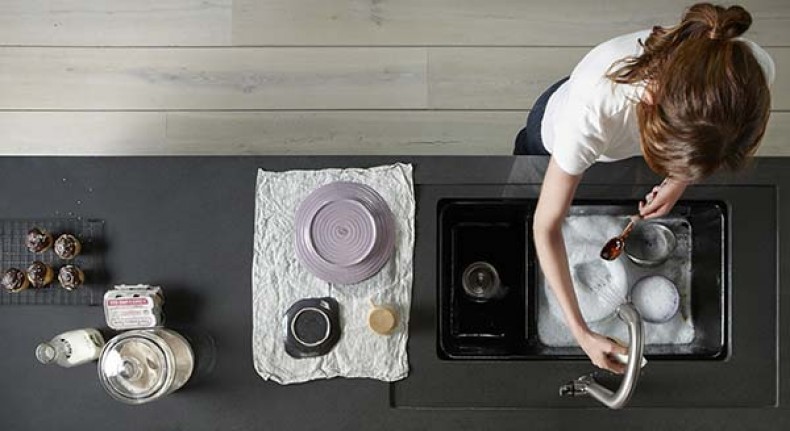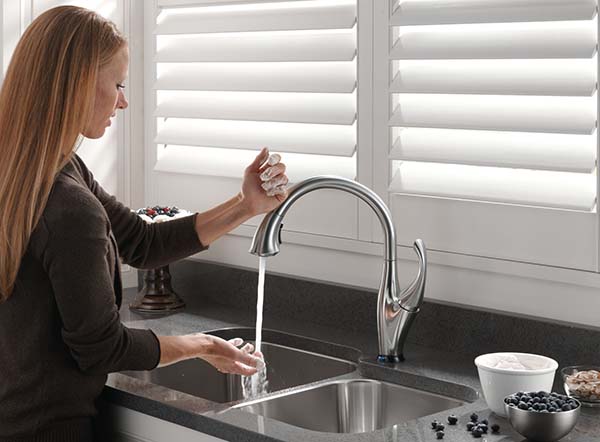Touch-control faucets
New options are convenient and efficient for kitchen tasks
By James DulleyThere is a proximity sensor under the faucet. One tap will turn water on and off.
Most people think of a kitchen faucet as just a simple valve to turn water on or off. But the proper selection of a kitchen faucet has a significant impact on water and energy savings, not to mention convenience, health and kitchen decor.
Two primary factors affecting water and energy efficiency of a kitchen faucet are the maximum flow rate and the convenience of controlling the flow and temperature.
The Environmental Protection Agency (EPA) has a listing for plumbing products, similar in concept to EnergyStar for appliances, called WaterSense. To qualify for a WaterSense label, the faucet must be 20 percent more efficient than standard products in a category. The industry standard is 2.2 gpm (gallons per minute) maximum water flow rate. Look for the WaterSense label.
The most recent efficient feature for kitchen faucets is the touch-control feature. Without having to turn off the water via the handle, the water flow can be controlled with the wave or touch of a hand. By not having to adjust the handle each time, water is not wasted by readjusting the temperature.
This provides significant water and energy savings — particularly when rinsing during food preparation and when washing dishes by hand. For most people, using a standard faucet consumes more water and energy when washing dishes by hand than when running a properly loaded efficient dishwasher. With the touch-control feature, careful hand washing can be more efficient than the dishwasher.
Another advantage: the faucet handle is touched less often with dirty hands, so the attractive finish lasts longer. Also, with all the health concerns today about diseases from cross contamination of foods, touching the handle less is a real plus.
Two technologies available
Of the two no-hands technologies, I use the type that senses touch from your body (hand, forearm, elbow, etc.). It detects the slight electrical change from your touch to open or close a special valve. For example, I can hold several plates in each hand and just tap anywhere on the faucet fixture with my elbow to start the water flow and stop it when they are rinsed.
The other technology has a proximity sensor on the top and in the front of the faucet neck. Waving a hand over the top sensor triggers the solenoid. This does require one free hand. The sensor on the front of the neck senses hands when they are in a typical hand-washing position.
Tall spouts with a pull-down sprayer are convenient. Depending upon your under-cabinet clearance, select the tallest one you can. You will appreciate the height when you have to rinse a large platter or fill a large pot.
The pull-down sprayer increases functionality. If you use this feature option often, select one with a pause button. This allows you to stop the flow temporarily when moving utensils or rinsing various foods without having to wave over or touch the fixture.
-
Share this story:




